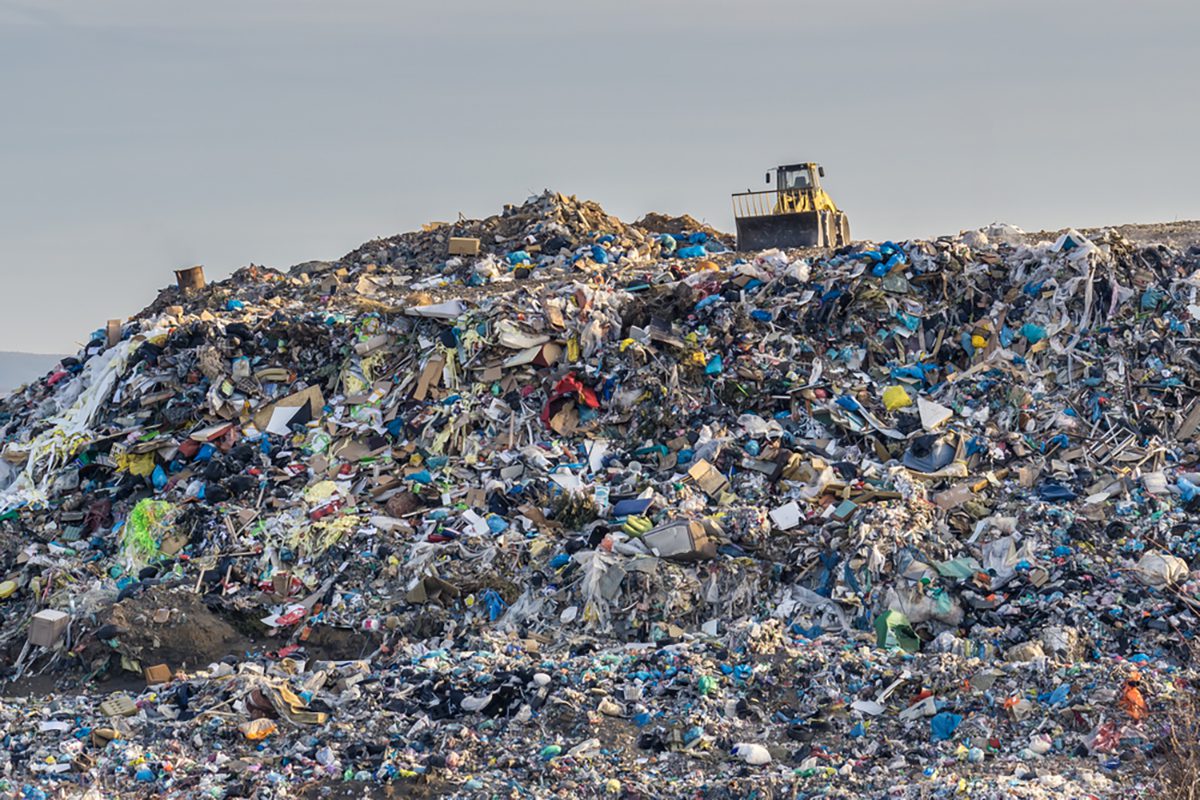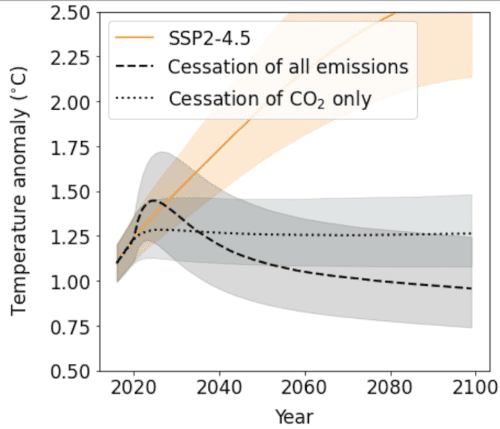
Countries around the world pledged in the Paris Agreement to limit warming to 1.5°C, or, at most, 2°C. As emissions rates gradually begin to decline, countries are looking at how many greenhouse gases can still be emitted while remaining below these temperature targets, which are deemed the upper limits to avoid the most catastrophic impacts to the climate system.
New research led by the University of Washington calculates how much warming is already guaranteed by past emissions. While previous research has explored this question for carbon dioxide, the new work includes related emissions such as methane, nitrogen oxide and aerosols, like sulphur or soot.
Under a moderate future emissions scenario, by 2029 the planet has a two-thirds chance of at least temporarily exceeding warming of 1.5 degrees Celsius, even if all emissions cease on that date, the study finds. If humans continue on a moderate emissions pathway, by 2057 there’s a two-thirds chance that the planet will at least temporarily exceed warming of 2 degrees Celsius. The study was published June 6 in Nature Climate Change.

“It’s important for us to look at how much future global warming can be avoided by our actions and policies, and how much warming is inevitable because of past emissions,” said lead author Michelle Dvorak, a UW doctoral student in oceanography. “I think that hasn’t been clearly disentangled before – how much future warming will occur just based on what we’ve already emitted.”
The authors used a climate model to study what would happen to Earth’s temperature if all emissions were to suddenly stop in each year from 2021 to 2080, along eight different emissions pathways. While it’s not realistic to suddenly turn off all human-generated emissions, authors say that it’s an absolute “best-case scenario” that establishes a lower limit for future warming.
Earlier studies of this type looked at emissions of carbon dioxide and found little to no “warming in the pipeline” once emissions cease. The new study, however, includes shorter-lived greenhouse gases, such as methane and nitrogen oxide, as well as particulate pollution like sulfur and soot.
Different emissions can either warm or cool the planet. Particulate pollution reflects sunlight and has a slight cooling effect, offsetting global warming. These particles settle out of the atmosphere much more quickly than heat-trapping greenhouse gases. Stopping all human emissions simultaneously thus produces a temporary bump of about 0.2 degrees Celsius that begins abruptly when emissions stop and lasts for about 10 to 20 years.
“This paper looks at the temporary warming that can’t be avoided, and that’s important if you think about components of the climate system that respond quickly to global temperature changes, including Arctic sea ice, extreme events such as heat waves or floods, and many ecosystems,” said co-author Kyle Armour, a UW associate professor of atmospheric sciences and of oceanography. “Our study found that in all cases, we are committed by past emissions to reaching peak temperatures about five to 10 years before we experience them.”
The paper finds that if countries aim to achieve their goals of staying below 2 degrees Celsius of warming, then the total amount of carbon that humans can still emit, the remaining “carbon budget,” is significantly smaller than previous estimates.
“Our findings make it all the more pressing that we need to rapidly reduce emissions,” Dvorak said.
Other co-authors are Dargan Frierson and Marcia Baker at the UW; Cristian Proistosescu at the University of Illinois at Urbana-Champaign; and Chris Smith at the University of Leeds. The study was funded by the National Science Foundation, the National Oceanographic and Atmospheric Administration, the Alfred P. Sloan Foundation and the U.K. Natural Environment Research Council.






